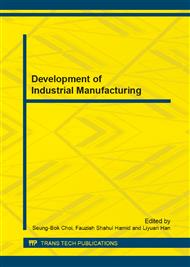p.31
p.35
p.40
p.45
p.53
p.58
p.62
p.66
p.73
Study on Microcrystalline Chitin Cinnamon Nanoemulsion
Abstract:
To improve the miscibility of cinnamon oil with water, this study uses microcrystalline chitin as the surfactant to prepare cinnamon oil nanoemulsion. Firstly, use isopropyl alcohol and concentrated phosphoric to act with chitin, disperse molecular crystal structure of chitin, and then use hydrochloric acid for decalcification, and prepare microcrystalline chitin through centrifugation, washing, freezing and drying. Dissolve it in acetic acid solution as emulsification, and dissolve cinnamon oil in anhydrous ethanol, and mix both of which to obtain emulsion by drops. Judge the emulsification process and results of microcrystalline chitin on cinnamon oil through conductivity data. The conductivity decreases gradually to 0 from 1.4μS·cm-1. At room temperature, the solution is aqueous liquid without stratification and precipitation, but has good stability.
Info:
Periodical:
Pages:
53-57
Citation:
Online since:
February 2014
Authors:
Keywords:
Price:
Сopyright:
© 2014 Trans Tech Publications Ltd. All Rights Reserved
Share:
Citation:


